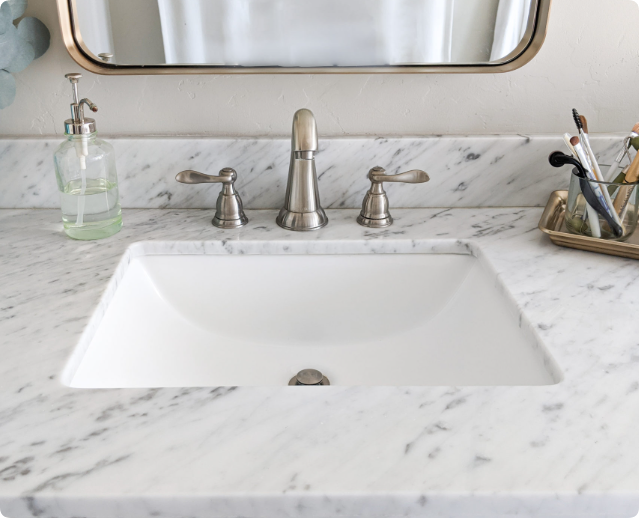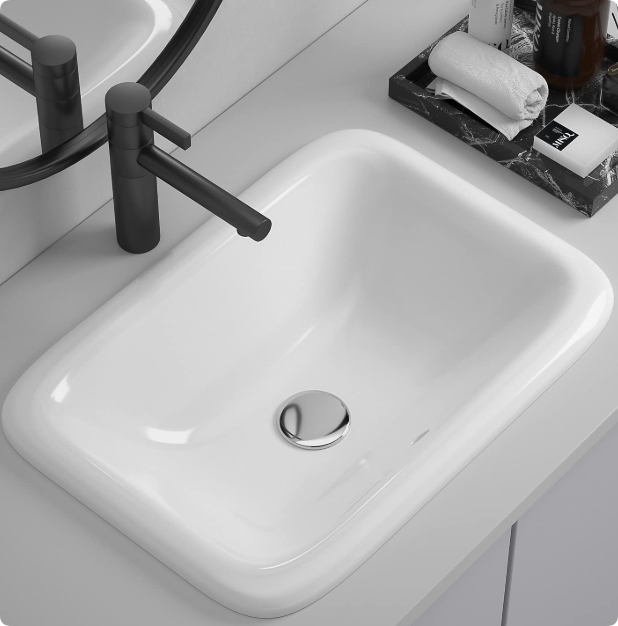A Comprehensive Guide for B2B Purchasers
When sourcing sinks for large-scale retail or small-batch purchases, B2B buyers are faced with many choices regarding design, functionality, and cost-effectiveness. Among the most popular sink types are undermount and drop-in sinks, each offering unique benefits and challenges depending on the application. This article will provide a detailed comparison of these two sink styles, helping B2B purchasers make an informed decision for bulk procurement, ODM, or OEM customization projects.
In this article, we will dive deep into the key differences between undermount and drop-in sinks. We will discuss factors like installation, cost, maintenance, material compatibility, durability, and aesthetic appeal. Additionally, we will include a comparison table for easier reference and help identify which sink style works best for specific procurement needs. This analysis is designed to guide large-scale retail purchases, as well as smaller volume, cross-border e-commerce buyers.
What Is an Undermount Sink?
An undermount sink is a type of sink that is installed underneath the countertop. The edges of the sink are mounted to the underside of the counter, leaving the countertop surface to flow directly into the basin. This creates a seamless, elegant look that is particularly sought after in modern kitchens and bathrooms.

Benefits of Undermount Sinks
- Aesthetic Appeal: Undermount sinks are favored for their clean, minimalist look. Without visible rims, the counter appears uninterrupted, offering a sleek and contemporary style that enhances high-end kitchens and bathrooms.
- Easy to Clean: Without a lip around the sink, debris can be wiped directly into the basin, making cleaning significantly easier. This is a major selling point in commercial settings where sanitation is a priority.
- More Counter Space: The seamless design allows for the entire surface area of the counter to be used, especially important in large kitchens or bathrooms where maximizing space is key.
- High-End Look: Undermount sinks are often associated with luxury due to their professional-grade installation and sleek aesthetic.
Challenges with Undermount Sinks
- Installation Complexity: Installing undermount sinks typically requires professional installation, which can be costly. The counter material must also be solid enough to support the sink, making it unsuitable for some types of countertops, like laminate.
- Limited Countertop Material Compatibility: These sinks are generally best suited for stone or quartz countertops, not for softer materials like laminate.
- Water Damage Risk: Since the sink is installed beneath the countertop, there is a risk of water damage to the edge of the counter if the installation is not done properly.
How to Change a Bathroom Sink! UNDERMOUNT
What Is a Drop-In Sink?
A drop-in sink, also known as a top-mount sink, is installed by dropping the sink into a pre-cut hole in the countertop. The lip of the sink rests on top of the countertop, securing the sink in place. Drop-in sinks are among the most common sink styles due to their straightforward installation process.

Benefits of Drop-In Sinks
- Ease of Installation: Drop-in sinks are easier to install, which reduces both time and costs for bulk purchasers. This can be particularly valuable for large-scale suppliers who need to get sinks installed quickly and efficiently.
- Wide Compatibility: Drop-in sinks can be installed in nearly all types of countertops, including laminate, wood, and stone. This gives B2B buyers a lot of flexibility when sourcing sinks for different projects.
- Cost-Effective: Drop-in sinks are typically less expensive than undermount sinks, making them a budget-friendly option for projects that require bulk purchases.
- Durability: The lip around the sink provides additional protection for the countertop edges, preventing water damage.
Challenges with Drop-In Sinks
- Aesthetic Appeal: The visible rim can interrupt the sleekness of modern designs. For buyers looking to create a seamless look, the drop-in sink may not be the best option.
- Cleaning Challenges: The rim of the drop-in sink can trap dirt, grime, and water, which can make cleaning more difficult. In commercial spaces, where ease of maintenance is critical, this could be a drawback.
- Reduced Counter Space: The lip that rests on the countertop takes up valuable space, reducing the usable area around the sink.
Comparison: Undermount vs Drop-In Sink
To better understand the differences between undermount and drop-in sinks, here’s a comparison table that outlines the key factors that B2B purchasers should consider:
| Feature | Undermount Sink | Drop-In Sink |
|---|---|---|
| Installation Complexity | Requires professional installation | Easier installation (DIY or professional) |
| Aesthetic Appeal | Sleek, modern, seamless design | Visible rim, traditional design |
| Compatibility with Countertops | Best with stone, quartz, or solid surfaces | Compatible with nearly all countertops |
| Cleaning Ease | Easy to wipe spills directly into sink | Rim can trap dirt, harder to clean |
| Cost | Higher cost for both sink and installation | More affordable, both for the sink and installation |
| Durability | Risk of water damage if not installed properly | Provides more protection to countertop edges |
| Counter Space | Maximizes counter space | Lip reduces usable counter space |
| Suitability for Large-Scale Projects | Ideal for high-end or modern projects | Great for budget-conscious, versatile needs |
| Maintenance | Lower maintenance due to seamless design | Requires more frequent maintenance due to rim |
Which Sink Style Is Better for Your B2B Purchases?
When making a decision between undermount and drop-in sinks, B2B buyers should take several factors into account. Understanding your customer’s needs, as well as your own business goals, will help you choose the right sink style. Here are some considerations to help you make an informed choice:
1. Project Budget
For B2B buyers, cost is often one of the most important factors. Drop-in sinks are typically less expensive and easier to install, which can significantly reduce both product and labor costs, especially for bulk purchases. Undermount sinks, while more expensive, offer higher-end appeal that could be ideal for luxury homes or commercial spaces where aesthetics are a key selling point.
2. Target Market
Consider your customers’ preferences. If you’re sourcing sinks for budget-conscious consumers or businesses, drop-in sinks may be a better fit. On the other hand, if you’re catering to high-end residential projects or premium commercial establishments, undermount sinks are often the preferred option due to their clean, sleek look.
3. Installation and Maintenance
Undermount sinks require more careful installation and may need professional contractors. However, their minimalistic design means they’re easier to maintain in the long term. Drop-in sinks are easier to install, which can be advantageous for large-scale projects where time and cost are critical.
4. Durability and Functionality
Drop-in sinks generally offer better protection for countertop edges, making them more durable in high-use areas. Undermount sinks, while more stylish, are at greater risk for water damage if installed improperly.
5. Material Compatibility
If you are working with a variety of countertop materials, drop-in sinks offer greater versatility. Undermount sinks, however, are generally best suited for solid materials like granite, quartz, or marble.
Comprehensive guides on sink trends and installation best practices.

35 Best Bathroom Sinks for Every Style and Space

Conclusion: Making the Right Choice for Your B2B Purchases
Both undermount and drop-in sinks have their distinct advantages, and the right choice ultimately depends on your specific project requirements. For B2B buyers focusing on luxury, aesthetics, and ease of cleaning, undermount sinks are a great option. For projects where cost, versatility, and ease of installation are priorities, drop-in sinks are a practical solution.
When selecting a sink for bulk procurement or small-batch orders, always consider factors like installation complexity, cost-effectiveness, material compatibility, and your customer’s expectations. Each sink type has a place in the market, and by understanding the pros and cons of each, you’ll be better positioned to choose the right option for your clients.
Ready to elevate your sanitary business? Contact www.danubetoilet.com today for expert consultation and bulk order solutions.
